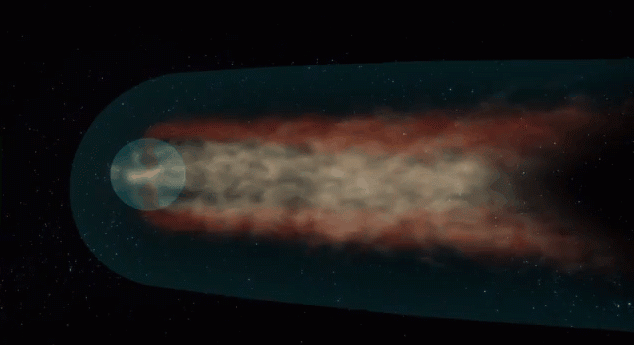The Tail of Our Solar System

Credit: NASA
The Goddard Space Flight Center at NASA published a video that explains the origin of the heliotail. Solar winds are responsible for the tail of the solar system. They carry neutrally charged particles that go beyond the farthest planets. Eventually, it encounters interstellar gas and a magnetic field, causing it to slow down and bend behind the solar system's trajectory.
NASA Launches Telescope to the Sun
If you could cut a slice into the heliotail the same way you would slice cucumber rounds, the cross section would resemble a four leaf clover. The two side leaves contain slower-moving particles because they are ferried by slower solar winds from the equator. The top and bottom leaves contain faster-moving particles because they're carried by solar winds from the poles of the sun.